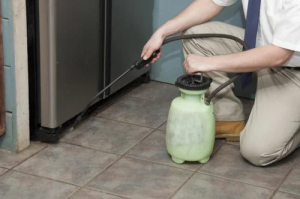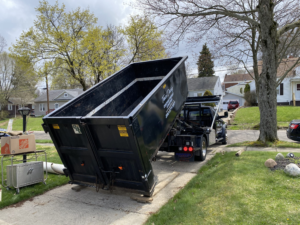Effective pest control helps maintain a healthy living and working environment. It can also save money on medical bills and lost productivity due to illness.
Preventing pests is usually more cost-effective than eradication. Methods include barriers, exclusion, suppression, and traps. Nematodes (microscopic worms) are helpful, including the roach-eating nematode Steinernema carpocapsae. Contact Pest Control Bridgewater NJ now!

One of the most important factors in pest control is accurate identification. This is especially true in Integrated Pest Management situations where the proper identification of pests allows for the development of strategies that are tailored to each specific situation. Accurate pest identification is the first step in any scouting or monitoring program, and is also the key to understanding and responding to pest damage.
Pests go through different stages of life, and their physical appearance can vary greatly during this process. This can make it difficult to identify a particular pest, as immature or adult forms may look similar to each other. In addition, some insects are able to camouflage themselves by emitting chemicals that are similar in structure to other organisms (such as odors, pheromones or parasitic wasps).
To accurately identify pests it is recommended that they be examined as soon as possible, and if not immediately identified, a sample should be taken for further study. This will provide important biological information such as life cycle, habitat and harborage preferences, and control methods.
The following lists provide descriptions of some common pests and their physical characteristics. Those with more significant pest infestations should contact a professional.
Many pests leave telltale signs such as gnawed wood, muddy trails or soiled areas. These are usually the easiest to recognize, but it is also important to examine areas that can be harder to reach, as some pests hide within wall cavities or cracks. In addition, some pests are known to give off detectable odors, such as a musty scent in mice, or an oily or sweet smell in cockroaches. These odors can help to quickly identify the pest, and may indicate where it lives in the house. Lastly, if you hear strange noises coming from the attic or walls, it may be a sign of an infestation by rodents, termites or other pests. This should be reported to a pest control company as soon as possible.
Pest Prevention
Pest prevention involves creating a barrier to keep unwanted pests out of your home, business or garden. This usually includes pest proofing which entails sealing the tiny cracks and crevices that pests use to enter your space. It also means eliminating the food sources that attract pests. This can include storing food in sealed containers and disposing of garbage regularly. Other pest control methods include using traps or bait stations, and removing the pests’ nesting sites.
Eradication is usually a rare goal in outdoor pest situations, however, eradication strategies can be employed when it is deemed necessary. This is often the case when a specific insect has become established in an area and is creating unacceptable harm to people or property. Examples of this are the Mediterranean fruit fly and gypsy moth control programs. Eradication is more common in enclosed environments, where the presence of certain pests is simply intolerable. Pests like rodents and cockroaches can spread disease, damage structures, contaminate food, and trigger asthma and other allergic reactions in people. Cockroach body parts and droppings have been shown to contribute to poor indoor air quality. Mosquitoes transmit diseases, including West Nile virus and malaria, and can cause painful stings and allergic reactions in humans.
Prevention methods are generally a much better alternative to treatment options, as they can reduce or eliminate the need for chemical intervention. Prioritizing prevention empowers technicians to tackle pest issues while upholding environmentally conscious and responsible practices.
Preventative measures are especially important for food processing facilities, as they can significantly affect the quality and safety of the foods produced within a facility. Practicing pest prevention in these facilities starts with inspecting incoming materials and carefully cleaning all products and equipment before they enter the facility. It also includes keeping trash receptacles tightly sealed, regularly cleaning exterior spaces, and trimming trees, bushes and other vegetation away from the building.
Other preventative measures include securing all doors and windows with weather stripping or door sweeps and keeping the interior of buildings clean and free of clutter. This can make it harder for pests to find hiding places and makes it easier to spot problems. It is also a good idea to maintain regular inspections of a building by a professional, as this will help to identify early signs of pest infestation and allow for quick action.
Pest Control Methods
There are many ways to control pests and prevent them from damaging crops, landscapes, homes or indoor environments. Some methods are mechanical, some are cultural and others are biological. Prevention and exclusion are important in all pest management programs. The goal is to limit the damage caused by a pest to an acceptable level with as little intervention as possible. This requires monitoring and scouting, correctly identifying the pest, considering its biology and environment, and evaluating economic or aesthetic injury thresholds. It also requires careful selection and timing of management techniques.
Physical or mechanical controls include traps, barriers, fences, screens and other devices to keep pests away from a field, garden or structure. These can be used alone or in combination with other management strategies. Chemicals such as pheromones, bacteria and viruses can be used to suppress some pest populations. These microorganisms target a specific pest and usually do not affect non-target plants or animals.
Cultural or environmental control involves modifying the natural habitat of a pest in order to reduce its abundance. This may include crop rotation, choosing more tolerant varieties or using disease-resistant plants. Changes in water and air temperature or humidity can also alter pest habitat and population levels.
Some natural enemies of pests, such as birds, mammals and frogs, can be encouraged to take up residence in an area where the pests are present. Keeping the predators in place can help control pests by limiting their numbers and providing food for other species.
Nematodes, microscopic worms that feed on the roots of grasses and other plants, are another useful biological pest control option. The beneficial nematode Steinernema carpocapsae, for example, targets grubs, flea beetles and other insects that damage lawns and garden beds.
Pests are attracted to areas where they can get food, shelter and water. Preventing these resources is often the most effective way to control them. Clutter provides places for pests to breed and hide and makes it harder to remove them. Tightly covered garbage cans and regularly removing waste from buildings or outdoors are additional steps that can be taken to discourage pests.
Pesticides
Pesticides are chemicals that kill or control unwanted organisms like insects, weeds, rodents and mildew. They can also be used to protect crops, food and livestock. Pesticides are available in many forms, including powders, liquids, sprays and baits. There are also non-chemical methods of controlling pests, such as physical destruction, biological controls and habitat modification. Pesticides are most effective when they are applied precisely at the time and place where the pest is most vulnerable.
Most pesticides act by attacking specific targets within the body of the organism, such as nerve transmission or metabolic processes. Some, such as fungicides and insect growth regulators, are not as targeted and can affect other parts of the plant or human body. Others, such as organochlorines and synthetic chemical insecticides, are more persistent in soil and in the human or animal body and can accumulate in fatty tissues.
The type of pesticide you use should be determined by the pests you are trying to control and your personal preferences. Non-chemical pest control methods should be tried first, and used consistently and correctly to reduce the need for chemical control. When chemical pesticides are needed, always read and follow the label directions for safe and effective use.
Keep children and pets away from areas where pesticides are mixed, stored or applied for the length of time listed on the label. Remove clothing that may have been sprayed and wash it immediately after exposure. Wash any skin that may have been exposed with soap and water.
Avoid spraying on windy days, as spray drift can contaminate people and other plants. Applying more pesticide than the label recommends will not make it more effective, and it is illegal!
Always wear protective gear as instructed on the pesticide label. This includes gloves, eye protection and a face mask. Clean up spills promptly and store or dispose of them properly.
Be aware that a small percentage of people are sensitive to pesticides. These people should seek medical help if they develop any symptoms after handling or ingesting a pesticide. The NPIC provides objective, science-based information about pesticides and pesticide-related topics to enable informed decisions by the general public. The NPIC does not replace or supersede the restrictions, precautions, directions and other information on pesticide labels or in other regulatory material.




